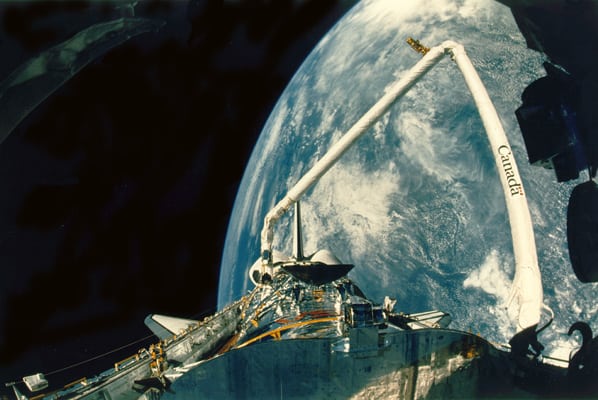Brampton company will return to the final frontier with development of Canadarm3
Published December 8, 2020 at 4:10 pm

A Brampton aerospace technology company will be literally lending a hand – and an arm – to a future NASA mission into space.
Today (Dec.8), the Canadian Space Agency awarded a $22.8 million contract to Brampton-based MDA to develop Canadarm3, the robotic arm that will be this country’s contribution to the US-led Gateway, a lunar outpost that will enable human exploration of the moon. MDA also built Canadarm and Canadarm2.
The contract involves the award of Phase A of the Canadarm3 program, with options for the follow-on phases. The ground planning and control operations for the system will take place exclusively in Canada through the Brampton site.
“We are proud to partner once again with the Canadian Space Agency to contribute world-leading Canadian technology and operational expertise to an international space exploration endeavour,” said Mike Greenley, Chief Executive Officer of MDA. “In addition to delivering the most advanced space robotics system ever built, the Canadarm3 program will serve as a catalyst for economic and socio-economic benefits in Canada, and will inspire a new generation of Canadians to think about what can truly be accomplished here in Canada.”
As MDA’s most ambitious space exploration project yet, Canadarm3 will operate aboard Gateway, the NASA-led project that will orbit the moon beginning in the mid-2020s, supporting both human and robotic missions to the lunar surface, serving as a science laboratory, and acting as a proving ground for exploration missions into deeper space.
Canadarm3 will include the full robotics system with artificial intelligence (AI) that will be able to perform specialized maintenance and science tasks, as well as operating ground control systems and other operations.
Because of extremely limited and delayed communication with the ground due to the Gateway’s location some 400,000 km from Earth, Canadarm3 will be highly autonomous and will use its advanced AI-enabled sensors and systems to safely conduct operations without requiring oversight and monitoring by the ground or on-board astronauts.
The Canadarm debuted in 1981 and flew on 90 space shuttle missions, while Canadarm2 has been operating on the International Space Station for close to 20 years.
insauga's Editorial Standards and Policies advertising





